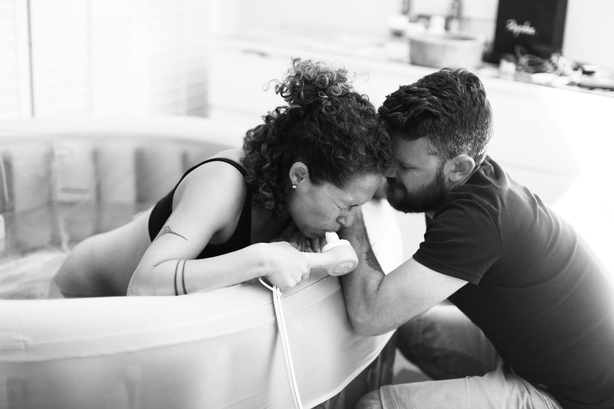Becoming a new parent comes with lots of decisions, but before you weigh up bottle or breastfeeding and navigating sleepless nights, there’s the question of where you’re going to give birth.
As her pregnancy progresses, reports suggest that Meghan Markle is planning to forgo the royal tradition of delivering her first child at the Lindo Wing of St Mary’s Hospital, London, and instead hopes to give birth at home in Frogmore Cottage, Windsor.

The Lindo Wing is famously where all of the Duke and Duchess of Cambridge’s three children were born. But if she does give birth at home, Meghan, 37, will be following in the Queen’s footsteps – who gave birth to her four children at home either Buckingham Palace or Clarence House.
While according to sources Meghan and Harry have not ruled out the possibility of a hospital birth, as a pregnant woman over the age of 35 is at increased risk of complications or the need for an epidural, a friend in America has said that the Duchess "sailed" through her pregnancy and is still doing yoga every day, so she can't see why she would not have a safe delivery at home.
'It is her favoured choice,' the source said, 'but it obviously depends on how things are nearer the time.'
Many women favour home births, often due to a desire to give birth without medical intervention, in a comfortable, familiar and private setting.
Of course, the decision is deeply personal and nobody should ever feel pressured or guilty – there’s no ‘right’ or ‘wrong’ and it’s about making the right decisions for you (and sometimes, health and medical matters mean choices aren’t as simple for some people).
Your midwife and GP can help discuss what the best option might be for you, but if you’re considering a home birth, there are a few things to keep in mind…
1. Do you have any risk factors?

While there is no complete report on the number of home births in Ireland, it's estimated that 0.4% of all births in Ireland take place at home. But opting out of the hospital isn’t advisable for everyone.
This is because giving birth at home slightly increases the risk of serious issues for the baby – such as death or issues that might affect the baby’s quality of life – from 5 in 1,000 for a hospital birth to 9 in 1,000 for a home birth.
If you’re pregnant with multiples, you have diabetes, or your baby is in the breech position, you will likely be advised to give birth in hospital. Your midwife or doctor will likely run you through the reasons why they think a hospital birth is safer for you and your baby.
2. Are you comfortable with limited pain relief?
Epidurals (an injection in the back to stop you feeling pain) are not available at home, but there are other options you could potentially use to help with managing labour pain during a home birth. These include gas and air, taking a warm bath, using a birth pool, TENS and relaxation techniques such as hypnobirthing.
If you’re planning a home birth, it’s important to be comfortable with the idea that you won’t have an epidural to take the edge off your contractions.
3. Do you want a water birth?

Some women choose to give birth in a birthing pool, which can usually be hired locally. Being submerged in water during your contractions has been shown to help with pain as well as being more soothing than lying on a bed, as the warm water relaxes the muscles and supports your weight.
Having a water birth is an option if you’ve had a low-risk pregnancy and your midwife or obstetric doctor believes it’s appropriate. There are many risk factors which may make this an unsuitable method for you, however, such as if you’re baby is in breech, you’re giving birth to twins, your baby is pre-term or if you’ve had a previous caesarean section.
4. Are you close to a hospital?

Most importantly, every woman opting for a home birth needs a plan for the possibility of being moved to a hospital during labour, should a complication arise.
The Birthplace study, published in 2011, found that 45 out of 100 women having their first baby were transferred to hospital during home birth, so it’s not an uncommon occurrence. Your chances of being able to stay at home improve with your second birth – only 12 out of 100 women having their second or subsequent baby have to go to hospital.
Whether it’s your first or fifth baby though, it’s vital to consider how long your journey to hospital might take. You should always have a hospital bag prepped and ready to go too, just in case. If you give birth at home, you’ll be supported by a midwife who can make arrangements for you to be transferred to hospital should you need urgent care.
Wherever you choose to bring your baby into the world though, you should make sure your birthing option feels right for you. Your midwife will be on-hand if you have any questions or concerns.

